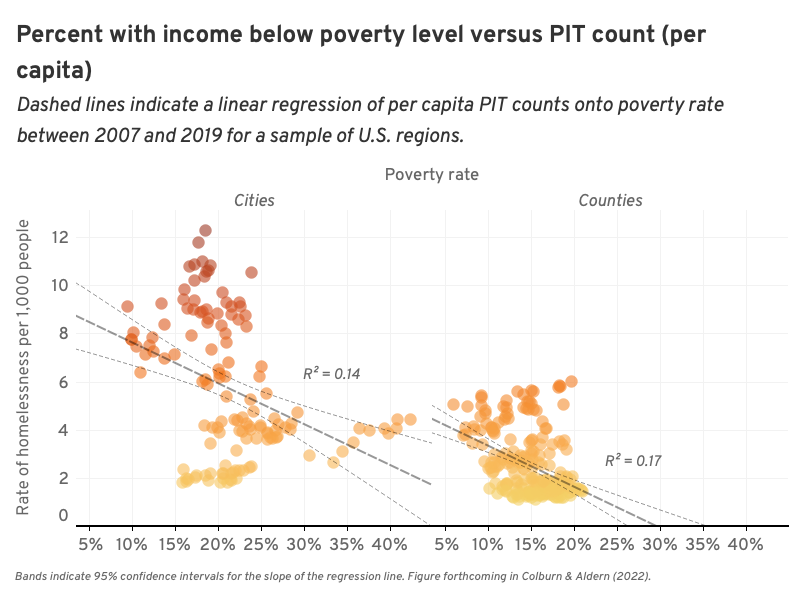Rates of homelessness vary widely across the country
Why? Homelessness is a Housing Problem seeks to explain this variance and offer policy solutions for different regional contexts.
Using accessible statistics, the researchers test a range of conventional beliefs about what drives the prevalence of homelessness in a given city—including mental illness, drug use, poverty, weather, generosity of public assistance, and low-income mobility—and find that none explain why, for example, rates are so much higher in Seattle than in Chicago. Instead, housing market conditions, such as the cost and availability of rental housing, offer a more convincing explanation.


Why? Homelessness is a Housing Problem seeks to explain this variance and offer policy solutions for different regional contexts.

Contrary to expectations, rates of homelessness tend to be lower where poverty rates are higher.

Over the course of the book, the researchers illustrate how absolute rent levels and rental vacancy rates are associated with regional rates of homelessness. Many other common explanations—drug use, mental illness, poverty, or local political context—fail to account for regional variation.

The researchers group cities into categories to help readers understand different rates of homelessness. Cities can be grouped by population growth and the way in which their housing supplies respond to increases in demand.
 GREGG COLBURN is an associate professor of real estate at the University of Washington’s College of Built Environments. He publishes research on topics related to housing and homelessness and is co-author of the book Homelessness is a Housing Problem: How Structural Factors Explain U.S. Patterns. Gregg holds an MSW and PhD from the University of Minnesota and an MBA from Northwestern University. Prior to academia, he worked as an investment banker and private equity professional. Gregg is co-chair of the University of Washington’s Homelessness Research Initiative and is a member of the National Alliance to End Homelessness Research Council.
GREGG COLBURN is an associate professor of real estate at the University of Washington’s College of Built Environments. He publishes research on topics related to housing and homelessness and is co-author of the book Homelessness is a Housing Problem: How Structural Factors Explain U.S. Patterns. Gregg holds an MSW and PhD from the University of Minnesota and an MBA from Northwestern University. Prior to academia, he worked as an investment banker and private equity professional. Gregg is co-chair of the University of Washington’s Homelessness Research Initiative and is a member of the National Alliance to End Homelessness Research Council.
Gregg can be reached via email or on Twitter @ColburnGregg.
 CLAYTON PAGE ALDERN is a neuroscientist turned journalist and data scientist based in Seattle. His essays and data journalism have been published by The Atlantic, The Economist, Scientific American, Grist, Logic, Sierra, Crosscut, and many other outlets. A Rhodes scholar and a Reynolds Journalism Institute fellow, he holds a master’s in neuroscience and a master’s in public policy from the University of Oxford. He is also a research affiliate at the Center for Studies in Demography and Ecology at the University of Washington. Most recently in housing policy, he led the data analysis and program evaluation team for homelessness programs at Pierce County, Washington.
CLAYTON PAGE ALDERN is a neuroscientist turned journalist and data scientist based in Seattle. His essays and data journalism have been published by The Atlantic, The Economist, Scientific American, Grist, Logic, Sierra, Crosscut, and many other outlets. A Rhodes scholar and a Reynolds Journalism Institute fellow, he holds a master’s in neuroscience and a master’s in public policy from the University of Oxford. He is also a research affiliate at the Center for Studies in Demography and Ecology at the University of Washington. Most recently in housing policy, he led the data analysis and program evaluation team for homelessness programs at Pierce County, Washington.
Clayton can be reached via email or on Twitter @compatibilism.
Click or tap below to order the book from UC Press.